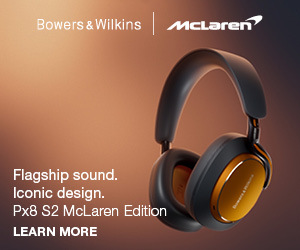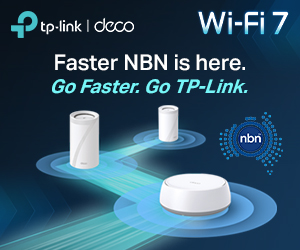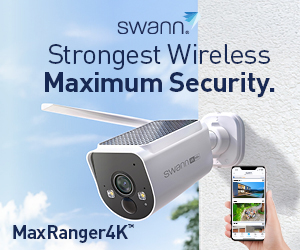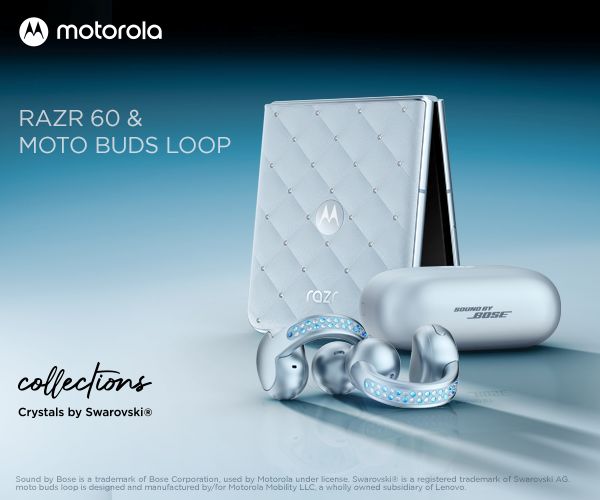The TCL C855 2024 is the successor to the acclaimed C845 (2023) and is class-leading in many ways. It wins hands down on image quality and pure bang-for-buck.
The TCL C845 – a superior Mini-LED TV with the lot was CyberShack’s pick of the mini-LED crop in 2023 with superior brightness, vivid Quantum Dot colour, easy-to-use Google TV, and a better 3-year warranty. Reviewers universally praised this device.
Our only 2023 caveat was that out-of-the-box calibration to get the best image was tricky. You see, brightness is the enemy of colour and contrast. You can have bright, but the colours are oversaturated (or washed out), and the black levels (contrast) are greyer. Or you can have natural colours and great blacks, but the brightness is too low.
The TCL C855 (65” specs used) substantially improves what we thought was very good. Peak HDR Brightness has gone from 2000 to 3300, dimming zones from 500 to 1344, and the speakers from 2.1 to 2.1.2. The new image pre-sets almost solve the calibration issue – only minor tweaks are needed depending on your room’s ambient light levels.
What are Mini-LED and Quantum Dot (generically speaking)
Mini-LED replaces Edge-lit (cheap), Direct-Lit (backlit, no local dimming), and Full-Array Local Dimming (FALD) full-sized LEDs and is the brightest backlight for an LCD screen. It still uses LCD ‘gate’ technology, so it can’t quite achieve the inky blacks that OLED can, and all LCDs suffer from blooming/haloing around white objects on dark backgrounds.
A 4K screen is 3840×2160 or about 8.3 million pixels. The TCL C855 65” version uses thousands of Mini-LEDs (instead of hundreds of full-sized LEDs) and has 1,134 dimming zones (compared to <200 in FALD). Compare this to OLED, where each pixel is a self-emissive (turns on or off) dimming zone.
Quantum Dots provides bright, saturated colours that we all seem to crave. The result is that Quantum Dot (QD) Mini-LED is the most expensive LCD technology but less expensive than OLED. For most, the value equation overcomes the attraction of OLED.
Read our guide Confused about TV tech? That’s just what they want!

Australian review: TCL C845 Mini-LED TV
Note: We have updated all specs to reflect Australian electricity at 50Hz. This means that a 120Hz panel operates at 100Hz. TCL websites still show refresh speeds based on 60Hz power.
All specs are based on a 65” model as tested. This model is for Australia and is not a variant of the C955 (4000 nits/2880 dimming zones) or QM851 sold internationally, so it is wise to ignore international reviews.
| Website | Company page Product Page Manual – More about Google TV |
| Price | 65/75/85/98” for $2999/3999/4999/9999 but shop around as we have seen the 65″ at <$2000 |
| From | Harvey Norman (and sub-brands), JB-Hi-Fi, Good Guys, Bing Lee, Betta, Retravision, Appliances Online, Appliance Central |
| Warranty | 3-years ACL |
| Made in | China |
| Company | TCL Technology (originally an abbreviation for Telephone Communication Limited) is a Chinese electronics company headquartered in Huizhou, Guangdong Province. It designs, develops, manufactures, and sells consumer products, including television sets, mobile phones, air conditioners, washing machines, refrigerators, and small electrical appliances. |
| More | CyberShack TCL news and reviews CyberShack TV/AV reviews |
We use Fail (below expectations), Pass (meets expectations) and Exceed (surpasses expectations or is the class leader) against many of the items below. We occasionally give a Pass(able) rating that is not as good as it should be and a Pass ‘+’ rating to show it is good but does not quite make it to Exceed. You can click on most images for an enlargement.
We are also tightening up on grading. From now on, Pass, for example, means meeting expectations for the price bracket. We consider a Pass mark to be 70+/100 with extra points added for class-leading and excellence.
First Impression – Pass+
It has new styling compared to the 2022/23 models with a stylish, “Sony-like’ slightly curved enclosed back, 5mm ‘no-bezel’ (three sides), and a substantial height-adjustable centre pedestal stand with cable management.
You cannot see the most significant changes. Adding left and right up-firing speakers on the rear panel gives a little Dolby Atmos 3D height. And a new anti-reflective screen coating does a better job than previous models.
Power comes from the left rear, and all ports are on the right rear. A power button on the bottom frame can turn it on/off and bring up a basic on-screen start menu.
It is 1445 (W) x 869 (H) x 298mm (D) x 23.8kg (with stand) and 56mm (D) x 22.2kg (without). That is well below the plasterboard/stud load safety limit of 50kg. It can also be wall-mounted using a standard VESA mount.

Voice remote RC933 – Pass+
Unlike many other brands, TCL has resisted removing the numeric buttons so you can dial up your favourite TV channel instead of wading through an EPG to find it—10 points as this is most important.
It is both IR and Bluetooth and has dedicated buttons for Netflix, Prime Video, YouTube, Stan, Disney+, and TCL Channels (A dedicated TCL ad-supported channel comprises live channels plus hundreds of on-demand shows – not tested). It is only missing a backlight.

Setup – Google/Android TV 12 – Exceed
Google/Android 12 TV (latest version) is easy to use. Log in via your email account, set up Wi-Fi (or Ethernet), and agree to sign your privacy away (all TV brands now want to know everything). TCL also wants you to sign in for TCL added-value features, but you don’t need it for Google TV use. If you want privacy, set up a junk Gmail account.
We won’t go into Android TV 12 except to say that it has all Australian digital free-to-air channels and a vast array of apps. It also uses Google Assistant to allow for Google Home and voice control. It has Apple HomeKit and Chromecast support. It also has standardised reporting of display modes, HDR formats, and surround sound formats – keeping manufacturers honest.
It has enhanced privacy, and you can now delete the unique Advertising ID. You will still get adverts (very few), but they are anonymous. It also has the beginnings of Google Gemini AI.
We have asked TCL for its formal OS update policy. In the EU, it must support TVs with security patches and parts for eight years.
Screen – Pass+ but narrower VA panel viewing angles
TCL C855 uses a 6th-generation Quantum Dot, mini-LED, full-array local dimming, BGR, HVA panel (a significant advance over VA) from sister company CSOT (China Star Optoelectronics Technology). CSOT bought Samsung’s LCD patents and factory in China. Samsung and many other brands now buy QD mini-LED, ULED (Quantum Dot), and LED/LCD panels from CSOT.
Dimming zones have increased dramatically over the 2023 (4th Generation) to 1344/2160/2304/2160 in the 65/75/85/98”. This means blooming and haloing, which are always an issue for an LCD panel, are significantly reduced and well-controlled.
The mini-LEDs use the new six-crystal type, allowing 16-bit light control. A wide-angle, even-light lens over the mini-LED layer improves brightness uniformity.
It uses a new Quantum Dots (QLED Pro)—we don’t have details, but marketing information suggests 25% brighter, more pure colours, and a 100,000+-hour panel life.
It is a 100/120Hz native refresh rate (50/60Hz AU/Other power) screen. Its two HDMI 2.1 ports support /100/120/144Hz, ALLM, VRR, Free-sync Premium Pro, and G-Sync (with a suitable NVIDIA or Radeon-equipped PC).
The panel is 8-bit+ 2 FRC (frame rate control) capable of reproducing 1.07 billion colours. DCI-P3 is 95% (Test 94.9%) with a Delta E colour accuracy of <1 (<4 is good). It also has full Calman calibration settings if you want professional calibration (you won’t need that).
Given it can potentially reach 3300 peak HDR, its HDR/HDR10/HDR10+/Dolby Vision IQ and IMEX Enhanced content is superb.
The panel’s black level can be as low as .4 NITS, meaning it is nearly black (pure black in OLED is 0 nits). Contrast claimed 5000:1 (Test 4476 and 1.4 Nits).
It uses Pulse Width Modulation (PWM) to dim backlights, but it is over 25,000Hz and will not affect PWM-sensitive viewers. It has TUV Flicker-free and low blue light certification.
Finally, a new anti-glare/reflective panel reduces light reflection.
Processor – Pass+
It uses an AiPQ Pro, a quad-core MediaTek Pentonic 700 MT9653 64-bit, 1.39GHz, and ARM Mali-G52 MC1 GPU overlaid with TCL’s growing TV and AI expertise. It has 3GB RAM and 64GB eMMC 3.1 storage.
This enables two full HDMI 2.1 48Gbps ports, one USB-A 3.2 Gen 1 5Gbps port, Wi-Fi 6 AX, BT 5.2, and a new HDR Vivid picture preset, which you may want to use.
It is fast and responsive.
AI – Pass+
The processor has a separate NPU, which means it can do more on-device processing. Simply put, you can put it on ‘Auto’ and let it do the work. Unlike other brands, TCL does not tout its AI prowess, so we had to dig deep to discover what its AI can do.
- AI Contrast – dynamic brightness management based on the image to display maximum precision, detail, and sharpness in the screen’s dark and light areas.
- AI Colour – constantly adjusts shades to optimise the DCI-P3 colour gamut.
- AI Clarity – reducing signal video noise, improving contours, and improving upscaling to 4K.
- AI Motion – adjusts the frames per second for better fluidity even with rapid movement.
- AI HDR – HDR, HDR10, HDR10+, Dolby Vision, Dolby Vision IQ, and renders them to preserve the artistic intentions of content creators.
- Ai-Scene – scene recognition and analysis
TCL has made significant progress over the past two years, and its AI expertise now rivals that of major bands.
Connectivity – Pass+
While many reviews simply state HDMI 2.1 they are wrong! Here is the verified port list.
- #1 HDMI 2.1 (48Gbps) 100/120/144Hz PC only, VRR/ALLM/FreeSync Premium Pro – Uncompressed Dolby Vision (DV)
- #2 HDMI 2.0 4K@100/120Hz (18Gbps)
- #3 HDMI 1.4b 4K@50/60Hz (10Gbps)
- #4 HDMI 1.4b 4K@50/60Hz (10Gbps) eARC (really only for a soundbar)
- Ethernet 10/100Mbps and supports DLNA media servers
- 2 x USB 2.0 5V/.5A/2.5W (mouse/keyboard support)
- 1x USB 3.0 Wattage unknown, but assume 9W. Up to 4K@60Hz playback.
- 1x AV in
- Optical Out
- RF antenna
- Wi-Fi 6 AX 2×2 MIMO
- BT 5.2
- Missing: 3.5mm headphone port (we could not find it)
Picture quality – Pass++ (but it is still not OLED)
The 2023 C845 was very good – this is better. The main change is the out-of-the-box presets provide better image quality with hardly any tweaking. Somehow, TCL has managed to control brightness, the enemy of natural colour and contrast. The secret is that TCL’s AiPQ Pro AI prowess is doing a much better job.
One word best describes the TCL C855 picture quality – stunning. It has enormous brightness (which needs to be wound back), great contrast, and saturated colours,
The uniformity of the whole screen’s colour and brightness is impressive. The significant increase in dimming zones means little, if any, perceptible halo effect around bright objects on a dark background.
It is excellent in bright Aussie open-plan loungerooms for SDR free-to-air TV (FTA), digital FHD/UHD HRD streaming, and Dolby Vision.
Brightness – Exceed
TCL claims:
- 630 nits SDR (Test 504/604 nits 100/2%% screen) – Pass
- 700 nits HDR (Test 575 nits in 100% and 800 nits in 75% window, although it may lower with prolonged use) – Pass
- 3300 nits peak HDR – Test VIVID mode 2700 nits and maximum settings 2980 in 2% window – Pass.
Before we analyse these spectacular figures, they are well above what SDR and HDR10+/Dolby Vision IQ need. Frankly, you cannot run this TV at sustained maximum brightness and get good colour accuracy and contrast. So, let’s simply call nits as bragging rights.
So yes, the panel can reach those figures using custom settings. But another issue—energy rating—comes into play. Mini-LEDs are power-hungry, and various countries have rules about such things. To achieve the minimum required 3-star rating (approx. EU F-rating 100W SDR and EU G-rating 350W HDR), its presets and default brightness settings are lower, especially if you use AI settings, BFI, and the automatic brightness control.



Image Tests
We tested using all presets – Vivid, Low Power, Smart HDR (a new preset), sport, and movie in SDR and auto-settings in Dolby Vision. Adaptive brightness was enabled, but no other AI was used.
Smart HDR is probably the best. Vivid was too bright and oversaturated. Movie had great colour, but increasing the brightness changed that.
Unlike the C845, which benefitted from calibration, you can use this out-of-the-box.
You may not be able to see the differences between the settings below as you will likely view this on an 8-bit phone screen or desktop monitor. Look for details in the hair, green eye shadow, red lips and jewels. Also, look at the black background for subtle tone differences. The TCL C855 can make anything look good.






Colour and Purity – Exceed
It reproduces 8-bit+2 FRC/1.07 billion colours. The 65” model has 1134 (576 in C845) dimming zones (proportional for different size models).
Our tests’ primary colours, red, green, and blue (RGB), were 100% accurate in SDR (standard dynamic range). Secondary and tertiary colours (like skin tones) were accurate. Using Smart AI HDR settings, it has a 94.9% DCI-P3 gamut. Delta E out of the box is <1 (<4 is good) – no calibration necessary.



Contrast – Best we have seen on mini-LED
The TCL C855 has a maximum contrast of 5000:1, which is well above all LED/LCD TVs and many Mini-LEDs. Contrast is the difference between the blackest black and the whitest white, and only OLED exceeds as each pixel is switchable on/off, giving pure black and white infinite contrast ∞:1.
This means that on movie and Smart HDR, you can get blacks as low as 1.4 nits and, if you tweak, as low as .4 nits.



Gradients – Pass
Perhaps the only place you see the difference between the 8-bit+2FRC and 10-bit is in gradients and minor colour banding. TCL C855 is pretty good.


Local Dimming and Blooming – Exceed
The TCL C855 65” has 1134 dimming zones. There is little noticeable blooming around white text on a back background. We did notice slight blooming where a solid white object crossed diagonally over several zones.
Below is a standard torture test (we remove colours to see the blooming) in which round balls move at 60fps over the screen. Only OLED can beat this.

Motion Smoothing – Pass
It uses variable Black Frame Insertion to smooth fast-moving images. This is unnecessary as most movies are at 24/30fps. However, we measured a decrease in brightness, which was not an issue.

Dirty Screen Effect (DSE) – Pass+
DSE in an LCD panel means inconsistent luminance performance across its surface area. It can appear as random splotches, uniform lines, wide bars, and sometimes vignetting (slightly darkening toward the corners).
The TCL C855 did not exhibit any DSE, giving extremely uniform colour, white and black screens. We could read down to 14-point text.


Reflectivity – Pass+
It is slightly better at reflectivity than the C845 – this is very good. Again, you will pay a lot more to get the LG G4’s black screen reflectivity!

Viewing Angle – Pass
VA panels lose colour after about 45° off angle (135°) but this seemed to be good to about 145°. It affects seating, where most viewers should sit in front of the TV.


Upscale – Pass+
Our Thunderbirds International Rescue 480p test was ‘A-OK, Mr Tracey’ with excellent details, great colours and contrast. This is usually washed out, soft and blurry on lesser TVs.


Below are 480/720/1080p upscale and the 4K (no upscale). It needs to pack pixels around the 480p image, making it larger to fill the 4K frame, and the image is softer. 720 is quite good.




Voice control – Pass+
It can support Google Assistant (dedicated mic button on the remote). Alexa and Siri (HomeKit/Airplay 2) require an external smartphone or speaker.
Sound – Pass
The 65” has 50W Onkyo 2.1. 2 comprising 2 x 10W left/right front, 2 x 10W left/right up and 1 x 10W sub-woofer. The 75” and above have 60W 2.2.2 – an extra sub-woofer.
The sound modes are Dynamic, Standard, Movie, Music and Voice. You will probably use Dynamic unless you want Voice, which recesses bass and treble. It is great for voice but not for music.
There was noticeable distortion at full volume 82dB – drop it back to 75dB for minimal distortion.
The mid-bass starts at 50Hz and steeply builds to 100Hz—where most of the distortion comes from. It is relatively flat to 6kHz with noticeable clipping (the signal is compressed to what the speaker can handle), followed by a dip to avoid harshness and a relatively flat treble to 20kHz.

It is a neutral sound signature that neither adds nor subtracts from the sound, giving the presets the best opportunity to recess frequencies.
It decodes Dolby Atmos (DA), DTS:X, DTS, Dolby Digital and PCM and downmix to 2.1.2.
With DA content, the 3D front-centric height is reasonable, and you can adjust that effect. There is no 3D surround.
FTA SDR TV is OK, but we repeat that sound is just as much part of the movie experience, and TCL has a reasonable $999, 7.1.4 with discrete rear speakers.
This is fine for all free-to-air SDR content, but get a soundbar if you want decent surround sound and Dolby Atmos. Read How to buy a soundbar that meets your needs? and Five tips for better TV sound – Dolby Atmos for beginners
It supports Bluetooth headphones simultaneously with internal TV speakers, which is good for the hearing impaired. It can also have Optical out and TV speakers.
Game Master Pro 3
We don’t assess TVs on games—several game sites can tell you more. It has a Game Master Pro mode, one HDMI 2.1 fully 48Gbps port, and a GtG response of 6.5ms. Toms Hardware said, “It is one of the best 4K gaming TVs loaded with all the necessities, including 144Hz VRR, ALLM, and AMD FreeSync Pro”.
Power – 3 star – hungry but reasonable
Our measurements on Vivid were up to 134W (5 cents an hour) for SDR and up to 412W (17 cents per hour) for Dolby Vision. On average, consumption is about 60% over an hour.
But we noticed an 8W per hour idle mode where the TV screen is off. This is .0032 cents per hour, but most TVs are <1W. We suspect it is due to the instant-on feature rather than sleep mode. Not an issue.
CyberShack’s View – TCL C855 is a spectacular mini-LED TV
TCL wants to remind you that its goal is to provide the best feature set and value in the QLED and mini-LED Google TV world. Indeed, from our experience and perspective, the notion of it being a tier 2 challenger brand to Samsung, LG, and Sony has long passed.
TCL’s brand credibility now extends to air conditioners, refrigeration, soundbars and more.
Competition
Is the TCL C855 the best Dolby Vision mini-LED you can buy? On paper, the feature/value equation and 3-year warranty mean it is a definite yes. (Specs 65”)
- Sony’s Bravia 9 (2800/1512 dimming zones) will likely outperform the TCL but at almost twice the price.
- Sony Bravia 7 (2000 nits/480 dimming zones) versus TCL (3300 nits/1344 dimming zones)—We have not reviewed Sony yet, but we saw it at the launch.
- Samsung does not support Dolby Vision, so it is out.
- The LG QNED91TSA 2024 is a mini-LED TV done almost right. It is reasonably priced and has an impressive 5-year OS upgrade policy. Whether you like WebOS or prefer Google TV and want four HDMI 2.1 ports is up to you.
- Hisense has the U8NAU (now being reviewed) using its VIDAA U7 operating system. It has a peak of 2000 nits/1000+ dimming zones (compared to 3300/1134), which is way more than adequate anyway. Its RRP is just below TCLs.
Does the TCL C855 beat OLED like the LG C4 evo OLED – the Goldilocks OLED TV and LG G4 evo OLED – LG’s best and brightest TV tops all. No, they have the best image quality, but TCL rocks in open space areas with little ambient light control.
TCL C855 ratings
(Note 2024+ ratings use a pass-mark of 70/100 – deduct 10 points for 2023 or earlier ratings)
The 2023 C845 scored 92/100 (equivalent to 82/100) – let’s see how this rates.
- Features: 85 – TCL has upped the specifications with higher nits and more dimming zones.
- Value: 85—Looking at the alternatives, it is well in the ballpark. While the RRP for the 65” is $2999, you can get it for under $2000, making it the class leader in features and value.
- Performance: 90 – The key advantage to this is the better out-of-the-box calibration and presets, meaning Joe and Jane Average can plug and go.
- Ease of use: 85—Google TV is like a comfy pair of slippers. It does everything you need in a relatively easy-to-use interface and has many more streaming Apps than other User Interfaces.
- Design: 85 – Subtle and elegant and easy to wall mount now with two up-firing speakers.
CyberShack Verdict
TCL C855 4K mini-LED TV
65/75/85/98” for $2999/3999/4999/9999 but shop around
















5 comments
KD
I went to buy a 85C7k a few months ago for $2800 after many reviews
Was offered a rare 75C855 for $2k (no 85C855 left anywhere in Oz), so jumped on it
Love the significant upgrade from 4yo 65C815 (dim, slow, bad in sunny room) and superior to my other two 55C835 upstairs
My only disappointment is an 85C855 would have been better as I love the immersion.
Prices of the 85” C8K are currently way better than when I bought(under $3000), so early 2026 when they are on runout, I’ll probably annoy wifey again by upgrading to an 85 lol
Chris Heinrich
I was impressed with this review and order one! I received my new 65c855 today. Virtually no instruction manual or diagrams, and out of the box the sound has continual sporadic crackles and buzzing. Cannot use the TV sound without going crazy. Not impressed at all.
Ray Shaw
We put TVs through more than 70 tests and it passed with flying colours so the sound issue is related to your set. Please do a factory reset (press the Home button on the TV remote. Then select Settings>Device Preferences>Factory Reset) and see if that helps. An unlikely cause may be local interference from other electrical equipment.
As for the manual – I totally agree and its no excuse that everyone it leaving manuals out. As I said in the review the manual is more about Google TV.
I would give it one chance and then get the retailer to swap it out as DOA. Pleaase let me know how you go.
E
Solid review, although I would’ve liked to see a bit more info on the gaming side of things or at least links to those reviews that focus on gaming.
Ray Shaw
My fault as I am not a gamer and don’t really know how to test for that use. I will see what I can do next year.